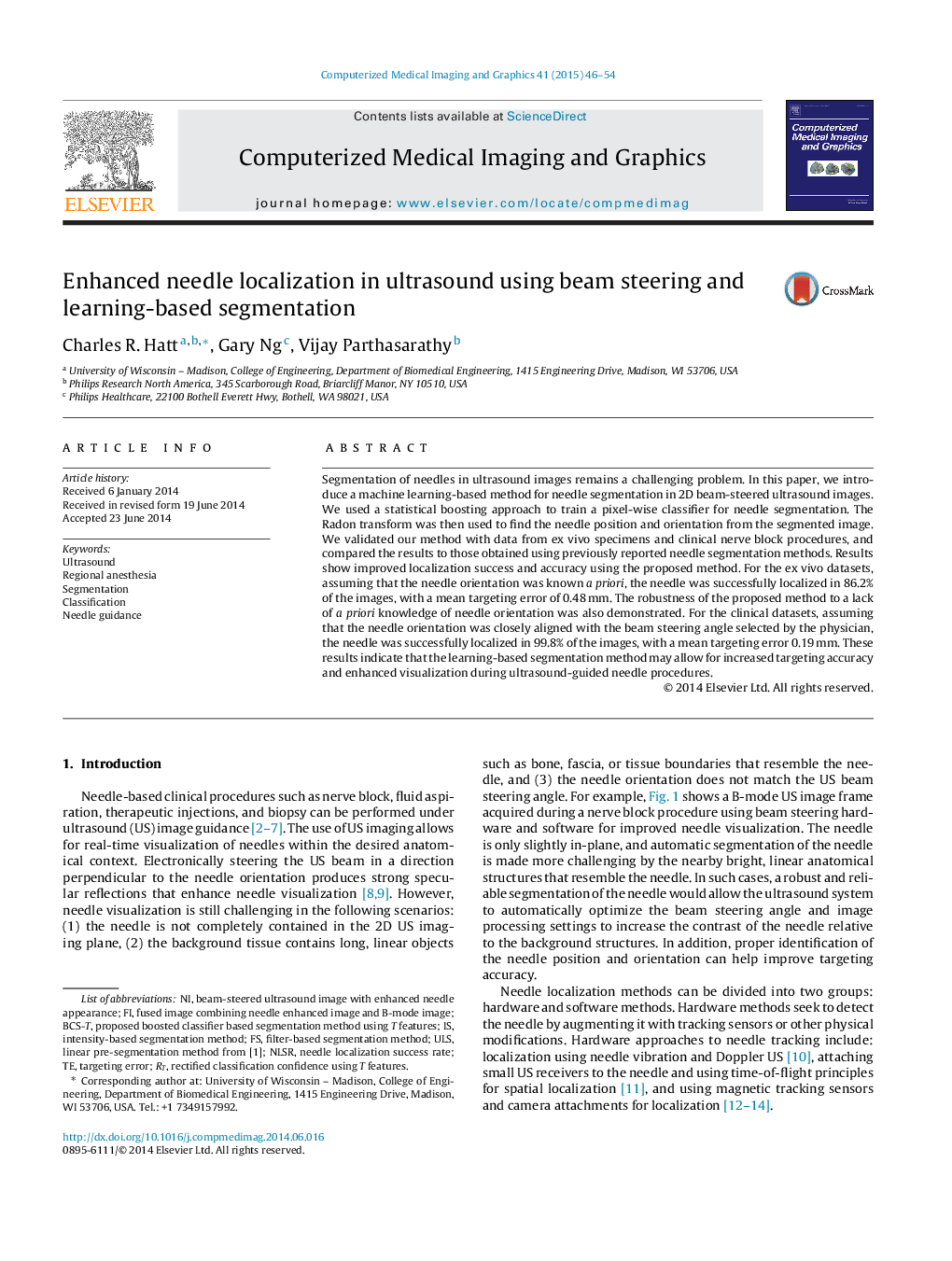| Article ID | Journal | Published Year | Pages | File Type |
|---|---|---|---|---|
| 504029 | Computerized Medical Imaging and Graphics | 2015 | 9 Pages |
•Beam steering is used to enhance the appearance of needles in ultrasound images.•Needle segmentation is challenging, even when using beam steering-based needle enhancement.•Needle segmentation is posed as a machine learning problem. A boosted classifier using a bank of log-Gabor wavelets is proposed for needle pixel classification. The classifier is trained on ex vivo and clinical nerve block datasets.•As a result of improved segmentation performance compared to previous methods, needle localization accuracy and robustness are increased using the proposed method.
Segmentation of needles in ultrasound images remains a challenging problem. In this paper, we introduce a machine learning-based method for needle segmentation in 2D beam-steered ultrasound images. We used a statistical boosting approach to train a pixel-wise classifier for needle segmentation. The Radon transform was then used to find the needle position and orientation from the segmented image. We validated our method with data from ex vivo specimens and clinical nerve block procedures, and compared the results to those obtained using previously reported needle segmentation methods. Results show improved localization success and accuracy using the proposed method. For the ex vivo datasets, assuming that the needle orientation was known a priori, the needle was successfully localized in 86.2% of the images, with a mean targeting error of 0.48 mm. The robustness of the proposed method to a lack of a priori knowledge of needle orientation was also demonstrated. For the clinical datasets, assuming that the needle orientation was closely aligned with the beam steering angle selected by the physician, the needle was successfully localized in 99.8% of the images, with a mean targeting error 0.19 mm. These results indicate that the learning-based segmentation method may allow for increased targeting accuracy and enhanced visualization during ultrasound-guided needle procedures.
